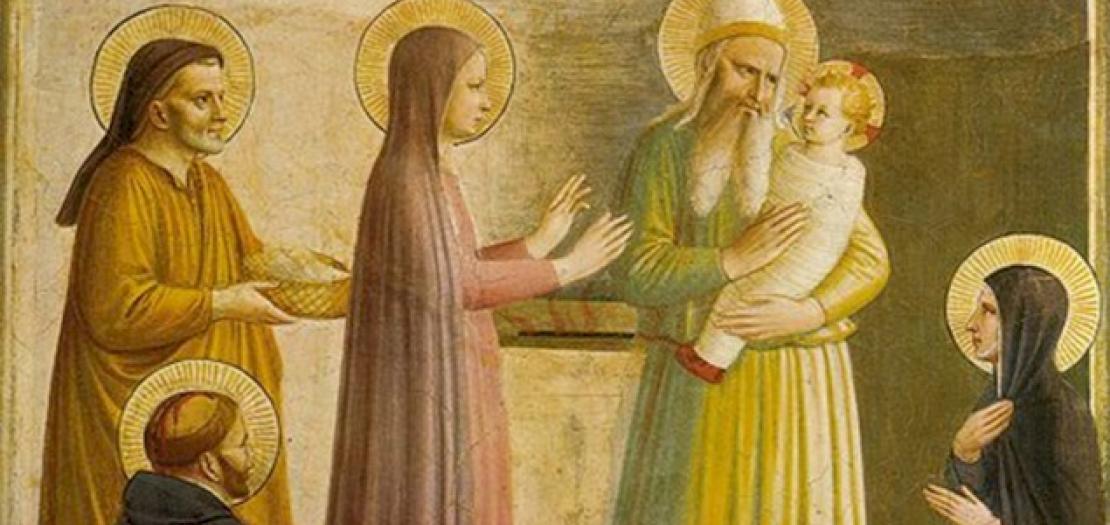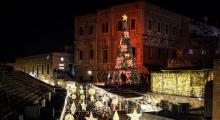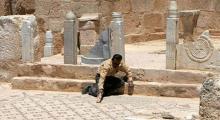Issued by the Catholic Center for Studies and Media - Jordan. Editor-in-chief Fr. Rif'at Bader - موقع أبونا abouna.org

Following is the text of the meditation by Latin Patriarch of Jerusalem His Beatitude Pierbattista Pizzaballa for the Presentation of Lord Jesus in the temple, Year A, February 2, 2023:
The account of the episode of Jesus’ Presentation in the Temple is reported only by the evangelist Luke, who dedicated the first chapters of his Gospel account to the events of the Lord’s infancy.
The setting is that of the Jerusalem Temple where Mary and Joseph bring the child to fulfill the Law that requires all firstborn children to be redeemed.
The evangelist gathers here a series of Old Testament rites, but seemingly with little precision, also leaving some matters unresolved. In verse 22, he speaks of “their” purification, namely, that of the mother and child, while the purification pertains only to the mother, and not the son. Luke then immediately passes on to another rite: the presentation of the newborn to God in the Temple, a rite that in Jesus’ time was no longer in use, while he then omits that of the redemption of the firstborn, which was instead prescribed by the Law (Nm 8:14-16), and which, however, could be done anywhere, without necessarily going to the Temple.
The evangelist intends to relate the central event, namely the encounter with Simeon and Anna, faithful Israelites to the Lord who, in obedience to the Spirit, receive the revelation of the presence of the Messiah.
On the one hand, obedience to the Law is underscored: in three verses, from 22 to 24, Luke speaks three times of the obedience of Mary and Joseph to the Law of the Lord (“According to the Law of Moses… as it is written in the Law…”).
On the other hand, we find another obedience, that of Simeon to the Holy Spirit: again, in three verses (from 25 to 27) the Holy Spirit, who moves the steps of Simeon in the direction to the long-awaited Messiah, is named three times. In this passage, the true protagonist is the Holy Spirit.
We can say that obedience to the Law advances the steps of the Holy Family towards the Temple, and obedience to the Holy Spirit moves those of Simeon. At that moment, in a certain sense, the ancient law meets with the Holy Spirit and his law in a new way. This is how the encounter and revelation happen.
Simeon, therefore, moved by the Spirit, recognizes in the child the awaited Messiah and raises a prayer to God. He asks to be dismissed from this life, now that he has completed his mission that of waiting for the Lord. The Spirit announced to him beforehand that he would not see death without having first seen “the Christ of the Lord” (26). Now, this has happened, and the time of waiting is over. Simeon did not do anything special; he does not have anything to boast about, except of having seen that God was faithful to what He freely promised him. And he saw the salvation of the Lord.
He not only saw a child, he saw the Christ of God; with the eyes of the Spirit, he saw that this Child, this Messiah, is the One who saves, He is salvation.
In other words, Jesus, who was brought to the Temple to be redeemed, is recognized as the One who will redeem His people and all peoples, as the One who will bring ultimate salvation. For everyone, this Messiah will be light.
It was the Spirit who permitted Simeon and later the prophetess Anna to see what the crowd in the Temple was unable to see. It is the Holy Spirit who allows you to see the salvation that takes place, that is, He allows you to go beyond what the eyes of the flesh see, and to understand the profound meaning of the events.
How this will occur remains more mysterious and there is like a shadow that drops within this luminous prophecy. Salvation will pass through hostility and rejection: it will be suffering at a high price.
This salvation immediately heralded as salvation for all becomes nevertheless also a sign of contradiction, a reason for rejection. “Behold, this child is destined for the fall and rise of many in Israel, and to be a sign that will be contradicted – and you yourself a sword will pierce – so that the thoughts of many hearts may be revealed.” (Luke 2: 34-35)
Because in the face of it, it will be necessary to take a stand, to take sides: for those who do not welcome it, it will be a stumbling stone, and for those who welcome it, it will be resurrection and life.
This feast also celebrates the day of religious life, namely of those who, like Simeon and Anna, spend their life only waiting the meeting with the Lord, in prayer and the service of charity and, like the two elderly ones, announce that they see with the eyes of the Spirit the salvation, which they experienced and which is a gift for all.
+Pierbattista







